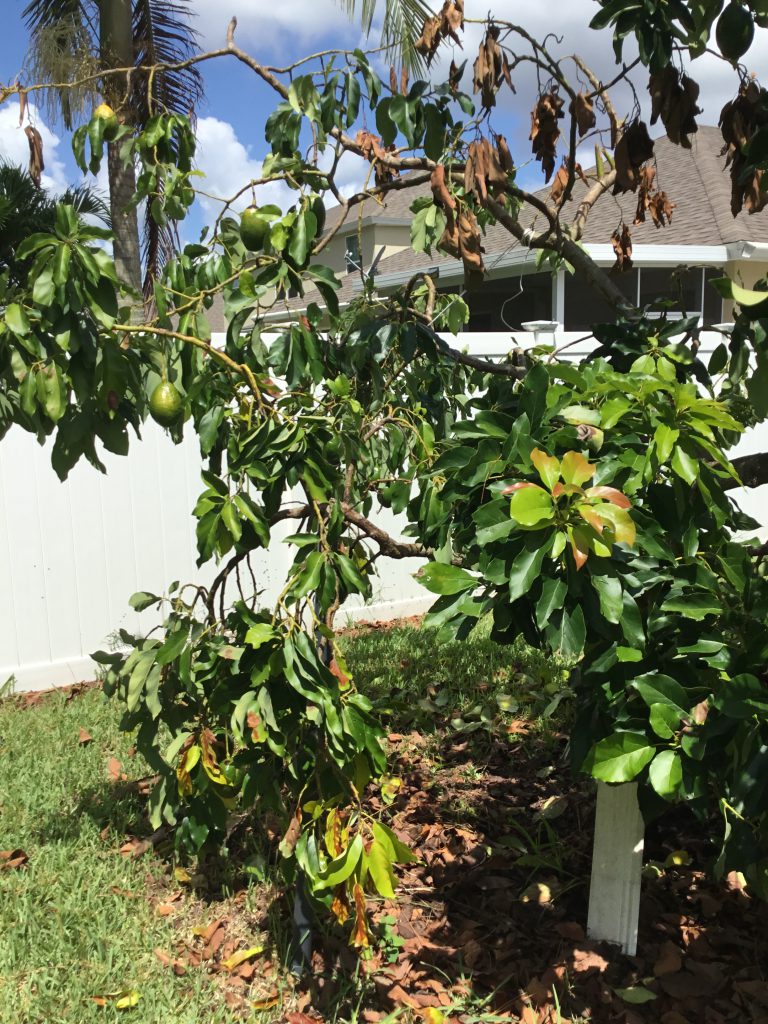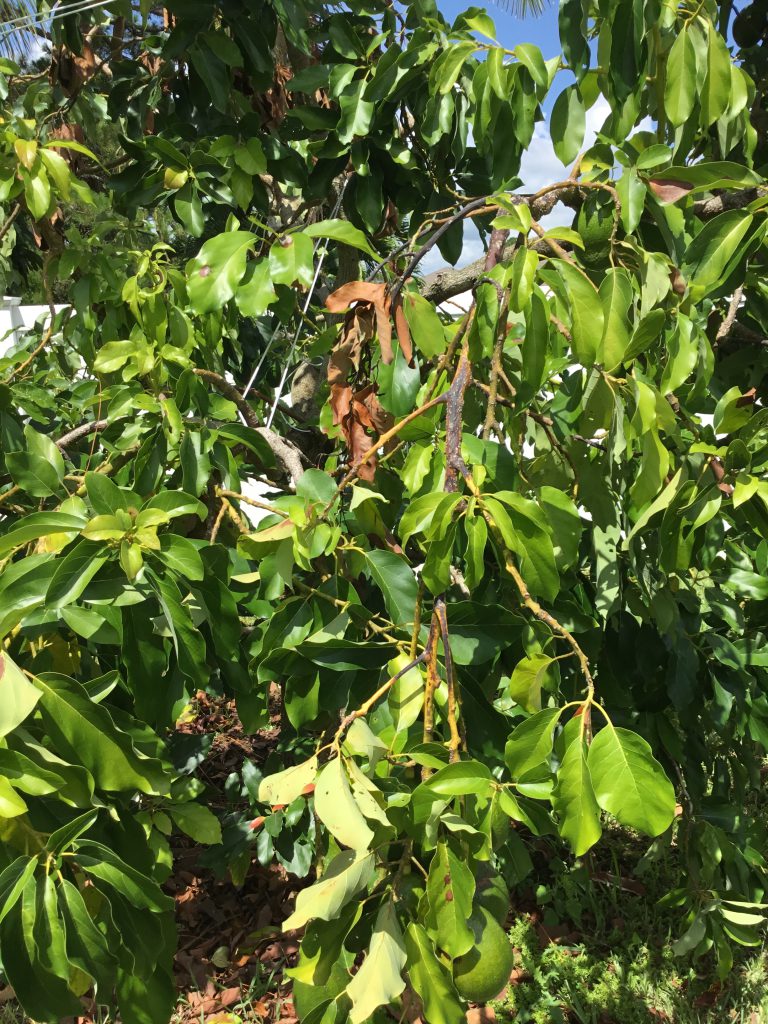Avocado anthracnose is a fungal disease that affects avocado trees and their fruit. It is caused by various species of the Colletotrichum genus, with Colletotrichum gloeosporioides being one of the most common culprits. This disease can lead to significant losses in avocado production and is a concern for avocado growers in many parts of the world.
Here are some key points about avocado anthracnose:
- Symptoms: The symptoms of avocado anthracnose can appear on various parts of the avocado tree, including the leaves, stems, and fruit. On the fruit, you’ll typically see small, sunken lesions that are initially olive green or brown and later turn black. These lesions may have a concentric ring pattern. On leaves and stems, you may see brown or black lesions as well. Symptoms include:
- Unhealthy or dead leaves
- Small, circular, or irregularly shaped dark or brown dead spots on the leaves
- Dead leaf margins and tips
- Large dead blotches along the leaf veins or in-between the veins
- Brown to black spots on leaves and fruits
- Blighting
- Dieback of twigs and branches
- Oblong lesions on the stems
- Round black sunken cankers on fruits
- Pale green, wilted, or dead leaves
- Terminal branches die back in advanced stages of the disease
- Feeder roots become darkened and decayed
- Unhealthy or dead leaves
- Disease Cycle: The fungus that causes avocado anthracnose can overwinter in infected plant debris or in the fruit. When conditions are favorable, such as high humidity and moderate temperatures, the fungus produces spores. These spores can be spread by rain, wind, or physical contact, and they infect healthy avocado tissue, leading to new infections.
- Impact: Avocado anthracnose can lead to premature fruit drop and reduce the quality of the fruit that remains on the tree. Severely infected fruit may become unmarketable. Additionally, the disease can weaken the avocado tree, making it more susceptible to other pathogens and stressors.
- Management: Managing avocado anthracnose involves a combination of cultural, chemical, and biological control methods. These may include pruning to improve air circulation, proper sanitation to remove infected plant debris, applying fungicides, and using disease-resistant avocado varieties if available.
- Prevention: Preventing the spread of the disease is crucial. Avoiding planting avocado trees in areas where the disease is prevalent, ensuring good drainage to reduce humidity around the trees, and promptly removing and destroying infected fruit and plant material can help prevent its spread.
- Fungicides: Fungicides can be used to manage avocado anthracnose, but their effectiveness depends on factors like timing and the specific fungicide used. It’s essential to follow recommended application guidelines.
- Research and Development: Ongoing research into avocado anthracnose is focused on developing more effective and environmentally friendly methods for its management. This includes breeding for resistance, exploring biological control options, and improving fungicide formulations.
Avocado anthracnose is a significant concern for avocado growers because it can cause economic losses and reduce the quality of the fruit. Effective management strategies and preventive measures are essential to minimize its impact on avocado production.
 3
3


